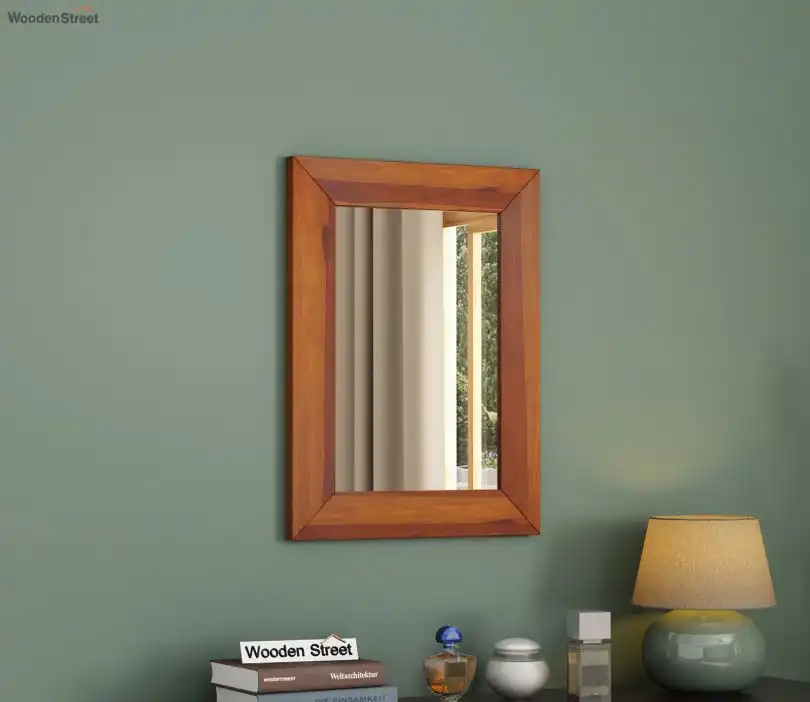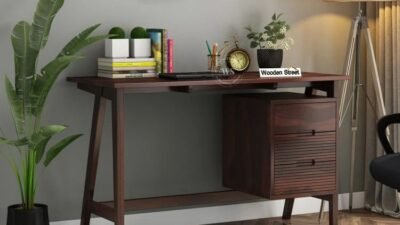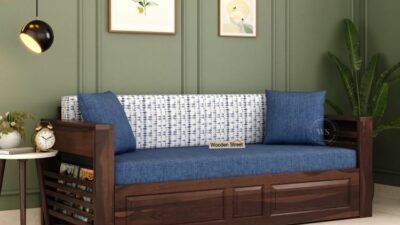Selecting the perfect wall mirror for your home is more than just picking a pretty design—it’s about finding the right size, shape, and style that complements your space while serving a functional purpose. A well-chosen mirror can enhance a room’s aesthetic, make it feel larger, and even improve lighting. With brands like Wooden Street offering a wide range of stunning mirror designs, the process can feel overwhelming. This article will guide you through choosing the right size wall mirror for any room, ensuring it blends seamlessly with your decor and meets your needs.
Why Size Matters in Choosing a Wall Mirror
The size of a wall mirror significantly impacts both the functionality and visual appeal of a space. A mirror that’s too small can look out of place, while one that’s too large may overwhelm the room. The right size creates balance, enhances the room’s proportions, and serves its intended purpose—whether it’s for grooming, decoration, or making a space feel more open.
When browsing collections like those from Wooden Street, you’ll find decorative mirrors in various sizes, from compact designs for small spaces to large statement pieces for grand rooms. To make an informed choice, consider the following factors.
1. Consider the Room’s Purpose and Size
The first step in choosing the right wall mirror is to evaluate the room’s purpose and dimensions. Different rooms have different needs, and the size of the mirror should align with those requirements.
- Living Room: In a living room, a wall mirror can act as a focal point above a sofa, console table, or fireplace. A general rule is to choose a mirror that’s about two-thirds the width of the furniture it’s placed above. For example, if your sofa is 84 inches wide, aim for a mirror around 56 inches wide. Wooden Street offers elegant mirror designs like arched or sunburst mirrors that add sophistication to living spaces.
- Bedroom: A full-length wall mirror is ideal for dressing areas, while a medium-sized mirror works well above a dresser. For a dresser that’s 60 inches wide, a mirror between 40-48 inches wide creates a balanced look. Consider Wooden Street’s rectangular or oval mirrors for a sleek, modern vibe.
- Bathroom: Bathroom mirrors should be functional for grooming. A mirror above a single vanity should be slightly narrower than the vanity itself—typically 24-36 inches for a 30-42-inch vanity. For double vanities, consider two mirrors or one long mirror spanning 60-72 inches. Wooden Street has compact and stylish decorative mirrors perfect for smaller bathrooms.
- Entryway: A wall mirror in the entryway creates a welcoming vibe and serves as a spot for last-minute checks. A medium-sized round or rectangular mirror (24-36 inches) works well for most entryways. Wooden Street’s intricate mirror designs with wooden frames can add warmth to this space.
Measure your room’s dimensions and the wall space where the mirror will hang to ensure it fits proportionally. A mirror that’s too large can dominate a small room, while a tiny mirror in a large space may look insignificant.
2. Factor in the Mirror’s Purpose
The purpose of the wall mirror influences its size. Ask yourself: Is the mirror primarily for decoration, functionality, or both?
- Functional Mirrors: If the mirror is for practical use, such as in a bathroom or dressing area, prioritize size based on usability. A full-length mirror (typically 60-70 inches tall) is great for checking outfits, while a vanity mirror should be wide enough to frame your face comfortably.
- Decorative Mirrors: For purely aesthetic purposes, like in a living room or dining area, focus on creating visual impact. Large decorative mirrors can make a small room feel spacious by reflecting light and surroundings. Wooden Street offers unique mirror designs, such as geometric or carved wooden frames, that double as art pieces.
- Dual-Purpose Mirrors: In spaces like entryways, mirrors often serve both purposes. Choose a size that’s practical for quick checks but also enhances the decor. A 30-40-inch round mirror from Wooden Street can strike this balance beautifully.
3. Follow Proportional Guidelines
To achieve a harmonious look, follow these proportional guidelines when selecting a wall mirror:
- Above Furniture: When placing a mirror above a piece of furniture, like a console or dresser, aim for a mirror that’s about 65-75% the width of the furniture. This creates a balanced composition without overwhelming the space. For example, a 48-inch-wide console pairs well with a 32-36-inch-wide mirror.
- Wall Space: If the mirror is a standalone piece, consider the wall’s size. A large wall can handle a statement decorative mirror (40-60 inches or more), while a smaller wall might need a mirror under 30 inches. Leave at least 6-12 inches of wall space around the mirror to avoid a cramped look.
- Height Considerations: The mirror’s height should complement the room’s vertical space. In rooms with high ceilings, taller mirrors (50-70 inches) can emphasize grandeur. In lower-ceiling rooms, keep mirrors shorter (24-40 inches) to avoid overwhelming the space.
Wooden Street’s collection includes mirrors in various sizes, making it easy to find one that fits your wall’s proportions.
4. Think About Shape and Style
While size is critical, the shape and style of a wall mirror also influence how it fits in a room. Round mirrors soften angular spaces, while rectangular mirrors add structure. Arched mirrors, popular in Wooden Street’s catalog, offer a trendy, elegant touch.
- Small Spaces: In compact rooms, a round or oval decorative mirror can make the space feel larger without dominating it. A 24-30-inch round mirror works well in cozy corners.
- Large Spaces: In spacious rooms, consider oversized rectangular or arched mirrors to fill the wall and create a bold statement. A 60-inch-wide mirror can anchor a large living room wall.
Browse Wooden Street for mirror designs that match your aesthetic, from minimalist metal frames to ornate wooden ones.
5. Lighting and Placement
Mirrors reflect light, so their placement affects both size choice and room ambiance. A wall mirror opposite a window can amplify natural light, making a room feel brighter and larger. In darker rooms, a larger mirror can maximize light reflection. For example, a 40-50-inch decorative mirror from Wooden Street placed strategically can transform a dim hallway.
Consider the mirror’s height when hanging it. For functional mirrors, the center should be at eye level (about 60 inches from the floor). For decorative mirrors, adjust based on the furniture or wall height.
6. Budget and Quality
Finally, consider your budget and the mirror’s quality. Wooden Street offers a range of wall mirrors that balance affordability with craftsmanship. Investing in a high-quality decorative mirror ensures durability and timeless appeal. Check for sturdy frames and clear, distortion-free glass when making your choice.
Conclusion
Choosing the right size wall mirror involves balancing aesthetics, functionality, and room proportions. By considering the room’s purpose, following proportional guidelines, and factoring in shape, style, and placement, you can find a mirror that elevates your space. Wooden Street’s diverse collection of mirror designs makes it easy to find the perfect decorative mirror for any room, whether you’re aiming for practicality or a statement piece. Measure carefully, visualize the impact, and select a mirror that reflects your style and enhances your home.
sumssolution.com




